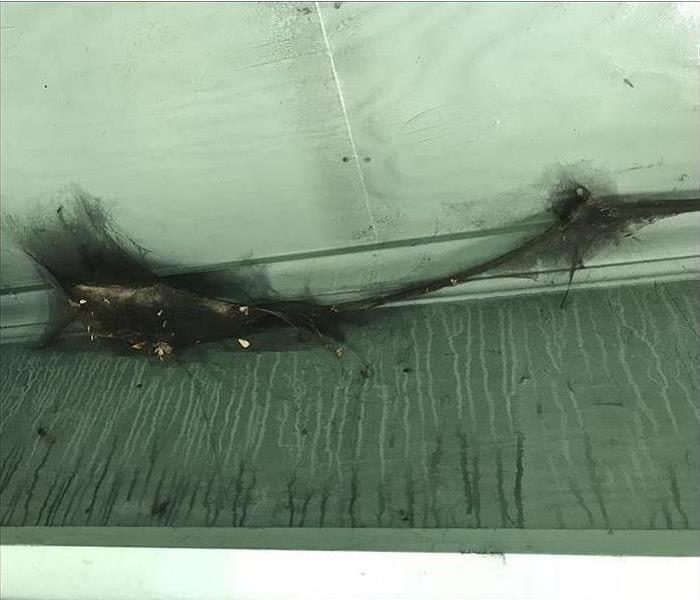Understanding Soot Deposits in your Taylors, SC Home or Property
8/21/2018 (Permalink)
Recently we assisted a family in Taylors by cleaning up their home after a small grease fire. The family took swift action and was able to contain the fire damage to the kitchen. But, smoke, soot, and extinguisher deposit can quickly disperse through a home. Which is where SERVPRO of East Greenville County comes in, we safely remove the smoke and other chemicals from your property so that your family can rest easy and focus on getting things back to normal after a fire.
While our team was doing a pre-clean walk through and taking photographs of impacted the impacted structure, furniture, and other belongings, one of the homeowners looked up into the ceiling of a stairwell and began to cry out. “Please don’t think I keep a dirty house! Both my mother and my grandmother would be so angry with me if they were to see this,” she had seen black cobwebs clinging to the walls. “I am so embarrassed. The smoke from the fire has colored the cobwebs and dust and now I can see that I was not cleaning my house well enough.” But what she did not realize was is that black cobwebs after a fire is not just smoke and soot attaching itself to cobwebs that are already there. They are something else entirely.
Black cobwebs, smoke webs, or soot webs are actually a side effect of the smoke and debris of a fire. As materials burn their particles disperse into the air and they become ionized or develop a positive or negative charge, they then attract other molecules that have the opposing charge type. The airflow can carry these small bonds throughout an entire house can they will grow and attract more particles. And often deposit themselves in cooler spaces and do NOT require preexisting cobwebs to form. Soot webs are not the only type of particle distribution patterns that you may see after a fire.
Many variables impact the deposit pattern, and there are a few different types:
Nail Pop: An optical illusion when charged soot particles are attracted to metal nails and deposit on the outside of building materials.
Ghosting: The Shadowly outline around electrical outlets or other wall mounted items form when the hot, kinetically charged air moves to cooler air, depositing the particles around the objects as it slows.
No matter what type of soot pattern you may see, please do not attempt to clean or disturb them, as they may have trace deposits of harmful chemicals from burnt materials of extinguishers. Please contact a professional like SERVPRO of East Greenville County to make sure your home is properly cleaned after a fire no matter how big or small.





 24/7 Emergency Service
24/7 Emergency Service
